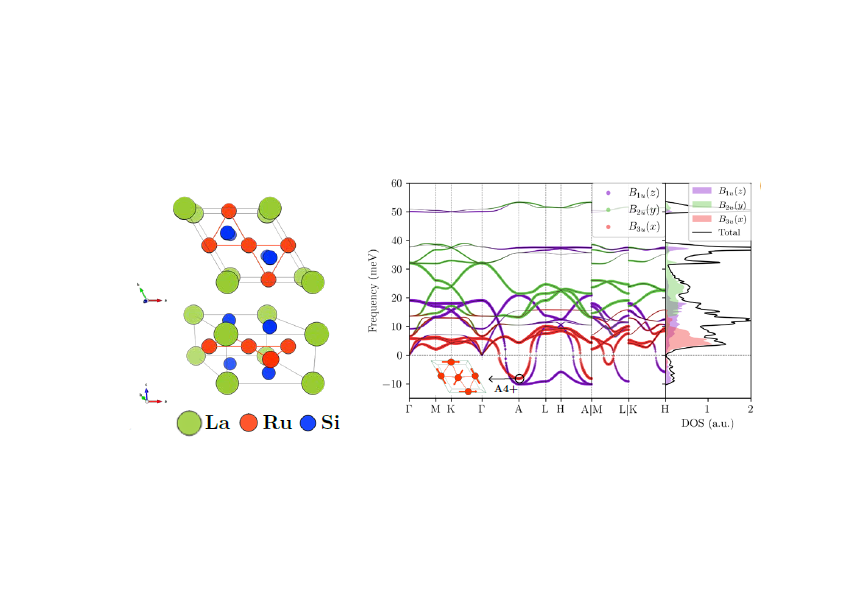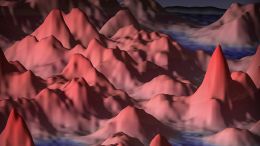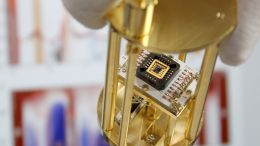Theory of Superconductivity in LaRu3Si2 and Predictions of New Kagome Flat Band Superconductors

March 26, 2025
We explore newly emerged research ideas that offer the best chances for reaching room temperature superconductivity. One of these ideas is flat band superconductivity. Flat band is a technical term that refers to a material where single electrons do not move at all. Immobile electrons can form Cooper pairs that are very robust and thus superconductivity can happen at a higher temperature. Now, you might wonder how can the pairs move and carry electric current, if they are made of immobile electrons? Amazingly, due to subtle quantum effects related to topology, they actually can! We aim to find the key to realizing the highest possible superconducting temperature using this new type of superconductivity.
In 2018, flat band superconductivity was experimentally observed in a stack of graphene layers (atomic sheets of carbon) that were slightly twisted with respect to each other. This provides a wonderful testbed to learn about the mechanism of flat band superconductivity. The temperature of superconductivity in twisted bilayer graphene is very low, but it is surprisingly high considering how few electrons the material has. Finding a material that has the same mechanism of superconductivity, but a higher density of electrons, provides a promising route towards room temperature superconductivity.
Our team includes pioneers and leaders of flat band superconductivity research, such as Milan Allan, Andrei Bernevig, Dmitri Efetov, Tero Heikkilä, Andrew Millis and Päivi Törmä. You can find further information in the review article Superconductivity, superfluidity and quantum geometry in twisted multilayer systems by P Törmä, S Peotta, BA Bernevig, Nature Reviews Physics 4, 528 (if link not available, view open access version)
In addition to flat band superconductivity, we explore other promising routes to room temperature superconductivity, for example carbon-based and hydrogen rich materials, with key expertise provided by Ion Errea and Pertti Hakonen.
Image made by DALL·E, an AI system created by OpenAI.
The problem in finding a material that is superconducting at room temperature is not that there are too few potential candidates. It is the opposite, the difficulty stems from them being too many! There are around 100 different chemical elements, i.e., different types of atoms, in nature. Known superconducting materials typically contain from one to five different ones, with varying ratios between the amounts of each element. You can imagine that the numbers of potential combinations easily reach billions. Not even a small army of experimental scientists can synthesize and measure them all in any reasonable time. However, for a well-trained machine learning algorithm, it is a piece of cake. We first generate materials data with state-of-the-art ab-initio simulation methods, then use the data for training the algorithms. Eventually, the algorithms are able to search for materials with properties that we predict to be beneficial for superconductivity based on our theoretical and experimental research. New promising superconducting material candidates found by AI will then be synthesized and experimentally tested as described in the next paragraph. You can find more information about machine learning in the superconductivity research in Superconductivity in antiperovskites.
We have in our team leading researchers in the fields of machine learning in superconductivity (Miguel Marques), ab-initio methods (Kristjan Haule, Ion Errea). We combine our new research ideas, such as flat band superconductivity, with the machine learning approach.
We have started a new line of research funded by The Kavli Foundation and the Klaus Tschira Stiftung which is also sponsored by Kevin Wells called Quantum Geometry in 3-Dimensional Materials (short QG3D). There we aim to take a step further by including more approaches: we start with theoretical concepts that combine quantum geometry with machine learning to aid the discovery of materials with promising superconducting properties at high temperatures and ambient pressure. Subsequently, we want to synthesize and characterize these newly identified components to test their downstream suitability as potentially useful superconductors. This rather holistic approach is needed to bring us one big step closer to finally realizing a room temperature superconductor.
Led by Päivi Törmä, we have an expert team in place that will work hand in hand to ensure we can anticipate the best possible outcome. This expert team includes theory and machine learning (Päivi Törmä and Miguel Marques), materials synthesis (Claudia Felser, Harold Hwang, Emilia Morosan and Priscila Rosa) and analysis (Milan Allan, Dmitri Efetov), and we of course collaborate with the whole SuperC team.
For more information about QG3D you can read these press releases published by The Kavli Foundation, the Klaus Tschira Stiftung and this article published by Aalto University.


